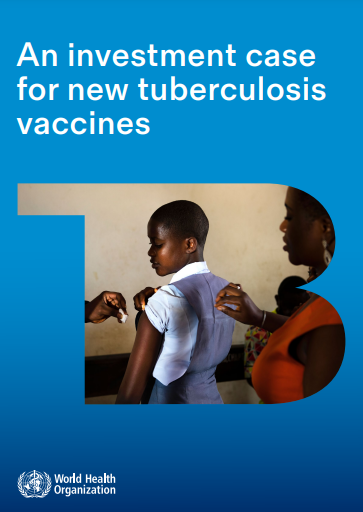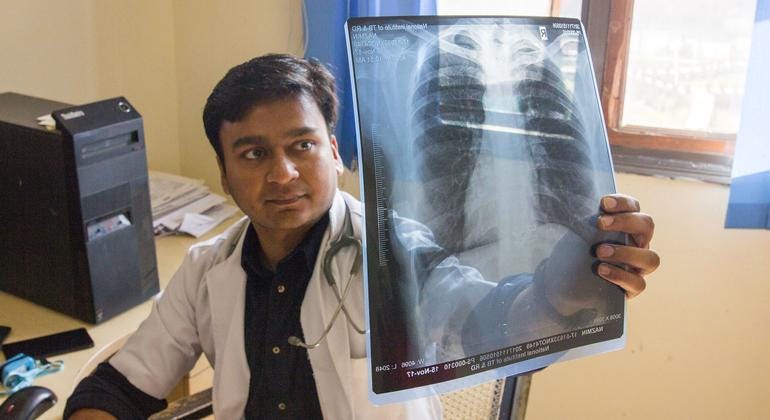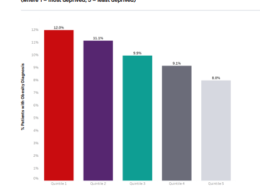health transformation institute
research, strategy and advisory
Joaquim Cardoso MSc
January 17, 2023
EXECUTIVE SUMMARY
The World Health Organization (WHO) has announced the creation of the TB Vaccine Accelerator Council, aimed at bringing together funders, global agencies, governments, and those affected by TB to identify and overcome barriers to vaccine development.
Despite the disease being curable and preventable, the global TB epidemic shows no sign of slowing down.
- In 2021, roughly 10.6 million people fell sick with the disease, and 1.6 million died from it.
- Currently, the Bacillus Calmette-Guérin (BCG) vaccine, developed in 1921, is the only licensed TB vaccine.
- A new vaccine that is 50% effective in preventing disease among young people and adults could avert up to 76 million TB cases and save 8.5 million lives, as well as generating an economic return of $7 in terms of averted health costs and increased productivity.
A new vaccine that is 50% effective in preventing disease among young people and adults could avert up to 76 million TB cases and save 8.5 million lives, as well as generating an economic return of $7 in terms of averted health costs and increased productivity.
INFOGRAPHIC

Overview
This document summarizes the results of the WHO-commissioned full value proposition for new tuberculosis (TB) vaccines.
The assessment was commissioned to provide early evidence for national and global decision-makers involved in TB vaccine development and implementation, who include stakeholders involved in vaccine research, financing, regulation and policy-making, manufacturing, introduction and procurement.
The goal is to accelerate development of effective vaccines against TB and their rapid introduction into countries.
SUMMARY OF FINDINGS
1.TB vaccines save lives
- Over 2025–2050, a TB vaccine for infants could avert 5.8–18.8 million cases and 0.8–2.6 million deaths, while a vaccine for adolescents and adults that is 50% effective in preventing disease could cumulatively avert 37.2–76.0 million cases and 4.6–8.5 million deaths.
- A vaccine that is 75% effective could avert 54–110 million new TB cases and 6.7–12·3 million TB deaths.
2.TB vaccines can help fight antimicrobial resistance
- A TB vaccine for infants could avert an estimated 2.4–8.6 million treatments (up to US$ 299 million in treatment costs saved),
- while one for adolescents and adults could avert 21.9–42.3 million treatments,
- saving up to US$ 3.2 billion in treatment costs.
3.TB vaccines can be highly cost-effective and cost-saving
- Vaccine products for both infants and adolescents/adults were estimated to be cost–effective in nearly all high TB-burden countries and cost-saving from a societal perspective.
4.TB vaccines offer a substantial return on investment
- The value of novel TB vaccines in monetary terms was estimated globally as US$ 68.6 (44.5–100.0) billion for introduction of a vaccine for infants
- and US$ 372 (283–474) billion for one for adolescents and adults.
5.Projected costs and budgetary impact of TB vaccines
- For US$ 11.8 billion costs for vaccine introduction and scale-up, a vaccine for infants could reduce TB diagnosis and treatment costs by 1.7% with an associated 0.01% increase in costs for antiretroviral therapy.
- For US$ 50.5 billion costs for introduction and scaling-up, a vaccine for adolescents and adults could reduce TB diagnosis and treatment costs by 16.8% with an associated 0.21% increase in costs for antiretroviral therapy.
6.TB vaccines can advance health equity
- A vaccine for infants could avert US$ 5.3–6.5 billion in TB-related household expenditure,
- while one for adolescents and adults could avert US$ 36.6–41.5 billion,
- including 66% of total catastrophic costs averted for the poorest 40% of the population.
7.There is a significant market for TB vaccines
- The population that requires vaccination could be up to 1.32–1.43 billion infants and 4.64–5.18 billion adolescents and adults.
8.TB vaccines can improve economic growth
- TB vaccines could have longer-term macroeconomic benefits.
- Absolute gains in gross domestic product of US$ 1.6 (0.8–3.0) trillion were projected with use of a vaccine for adolescents and adults
- and US$ 0.2 (0.1–0.4) trillion with a vaccine for infants.
DEEP DIVE

WHO launches Council to develop TB vaccines, hoping to save millions of lives
United Nations
January 17, 2023
Tedros announced the creation of the TB Vaccine Accelerator Council at a high-level panel at the World Economic Forum in Davos, Switzerland.
During his opening remarks, he noted that one of the most important lessons from the COVID-19 response is that innovative health interventions can be delivered fast if they are prioritized politically and financed adequately: no new TB vaccines have been licensed in a century, despite its impact on human health.
“The challenges presented by TB and COVID-19 are different, but the ingredients that accelerate science, research and innovation are the same: urgent, up-front public investment; support from philanthropy; and engagement of the private sector and communities,” said Tedros. “We believe the TB field will benefit from similar high-level coordination.”
No slowing down
The new Council is intended to bring together funders, global agencies, governments and those with TB, in identifying and overcoming barriers to vaccine development.
TB, also known as consumption, is caused by bacteria that mostly affect the lungs. It is spread through the air when someone who has TB coughs, sneezes or spits.
The disease is both curable and preventable, yet, despite global commitments to end TB by 2030, the epidemic shows no sign of slowing down, says WHO.
In 2021, roughly 10.6 million fell sick with the disease, and 1.6 million died from it. Drug resistance continues to be a major problem, with close to half a million people developing drug-resistant TB every year.
A sole vaccine
Currently, the Bacillus Calmette-Guérin (BCG) vaccine, developed in 1921, is the only licensed TB vaccine.
While BCG provides moderate efficacy in preventing severe forms of TB in infants and young children, it does not adequately protect adolescents and adults, who account for nearly 90 per cent of TB transmissions globally.
WHO recently commissioned a study on investing in new TB vaccines, which estimates that over 25 years, a vaccine that is 50 per cent effective in preventing disease among young people and adults could avert up to 76 million TB cases.
Furthermore, every dollar invested in a 50 per cent effective vaccine could generate an economic return of $7 in terms of averted health costs and increased productivity.
Additionally, some 8.5 million lives could be saved, as well as $6.5 billion in costs faced by TB-affected households, especially for the poorest and most vulnerable.
Furthermore, every dollar invested in a 50 per cent effective vaccine could generate an economic return of $7 in terms of averted health costs and increased productivity.
Additionally, some 8.5 million lives could be saved, as well as $6.5 billion in costs faced by TB-affected households, especially for the poorest and most vulnerable.
Meanwhile, a vaccine with 75 per cent efficacy could avert up to 110 million new TB cases and 12.3 million deaths.
Meanwhile, a vaccine with 75 per cent efficacy could avert up to 110 million new TB cases and 12.3 million deaths.
Countries will meet later this year for a UN High-Level Meeting to review progress on commitments made in a 2018 political declaration on the fight against TB.
WHO described the event as an important opportunity to correct setbacks in the response to the virus, which includes the urgent development and delivery of new TB vaccines.
Originally published at https://news.un.org on January 17, 2023.
RELATED ARTICLE












